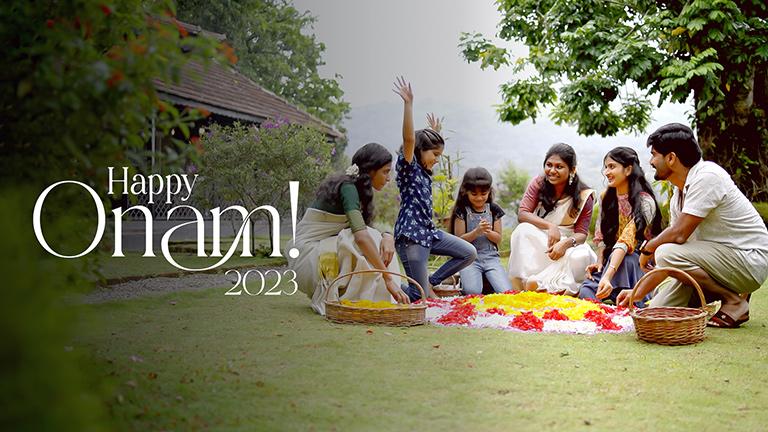Onam, the vibrant and culturally rich festival of Kerala, has deep-rooted myths and legends associated with it. While the festival’s essence lies in celebrating the return of the mythical King Mahabali, there’s more to Onam than meets the eye. In this detailed exploration, we delve into the historical myths, the cultural significance, and the thriving market dynamics that make Onam a festival of prosperity, spending, and business growth.
Mythical Origins: Onam’s mythological backdrop traces its roots to the grand tale of Mahabali, the virtuous and generous king who once ruled Kerala. Mahabali’s lineage, which can be traced back to a Brahmin sage named Kashyapa, brings forth a compelling narrative interwoven with Hindu mythology. He was the great-grandson of the demon king Hiranyakashipu and the grandson of the devout Vishnu devotee Prahlada. Prahlada, despite being born to a demon king, rebelled against his father’s tyranny and became a staunch Vishnu devotee. Hiranyakashipu’s eventual downfall at the hands of Vishnu laid the foundation for Mahabali’s reign.
The Arrival of Mahabali: Mahabali’s ascension to power was marked by his victory over the Devas, the gods, and his conquest of the three worlds. Yet, his reign wasn’t marked by tyranny; instead, it was characterized by benevolence and virtuous rule. The Devas, defeated but recognizing Mahabali’s noble governance, sought Vishnu’s assistance in their battle against him. However, Vishnu, honoring Mahabali’s devotion and commitment to his people, chose not to join the Devas in their violent endeavor.
Vamana’s Divine Intervention: Vishnu decided to test Mahabali’s unwavering devotion. Taking the form of Vamana, a dwarf monk, Vishnu approached Mahabali during a Yajna (a ritual). Mahabali, known for his generosity, offered to grant Vamana any wish. Vamana asked for just “three paces of land.” Mahabali agreed, but as Vamana took his three steps, he covered everything Mahabali ruled over. In a selfless act of devotion, Mahabali offered his head for Vamana’s third step.
The Onam Festival: Vishnu, touched by Mahabali’s humility and devotion, granted him a boon. Mahabali could visit the lands and people he once ruled every year, marking the celebration of Onam. The festival serves as a reminder of Mahabali’s virtuous rule and his unwavering commitment to keeping his promise to Vishnu. The pinnacle of Onam is celebrated with a grand nine-course vegetarian feast called Onasadya.
The Business of Onam: Today, Onam isn’t just a celebration of mythology; it’s a celebration of spending, shopping, and business growth. The market during Onam witnesses a significant surge, with estimated total spending ranging from Rs 10,000 crore to Rs 20,000 crore. A substantial portion of this spending goes into clothes, flowers, and food. The demand for new clothes is exceptionally high, with custom Onam sets, tissue sarees, and mural-painted attire stealing the spotlight. The catering sector thrives, with an estimated Rs 250 crore worth of food served on a single day.
The Economic Impact: Onam’s cultural significance extends beyond rituals; it’s a festival that fuels local businesses, product makers, retailers, and branded companies. Government initiatives further boost massive spending, which, in turn, helps stimulate the market. Agricultural producers reap the benefits, and the overall festive spirit revitalizes business activity in Kerala. Notably, the sale of flowers, fruits, and vegetables surges by 20-30% during Onam.
The economic impact of Onam is clearly visible across various sectors:
- Clothing (Expected Sales: Rs 1,700 crore): Onam triggers a surge in demand for special attire, with an anticipated sales figure of Rs 1,700 crore for this year.
- Food (Estimated Single-Day Revenue: Rs 250 crore): The catering sector flourishes during this festive season, especially with the popularity of traditional Kerala meals served on banana leaves, generating an impressive estimated revenue of Rs 250 crore in a single day.
- Jewelry (Expected Sales: Rs 500 crore): Gold jewelry takes the spotlight as a preferred gift choice during Onam, with expected sales reaching a remarkable Rs 500 crore this year.
- Electronics (Expected Sales: Rs 300 crore): Onam serves as a prime time for individuals to invest in new electronic devices, and this year is no exception, with projected sales set to reach Rs 300 crore.
- Tourism (Expected Revenue: Rs 1,000 crore): Onam beckons tourists to explore the beauty of Kerala, and the tourism industry is poised to reap the benefits with an estimated revenue of Rs 1,000 crore this year.
These statistics underscore the significant economic contributions of Onam across diverse sectors, reflecting its pivotal role in bolstering the regional economy.
AdEx and Branding: Onam isn’t just about traditional values; it’s a festival of modern branding. Brands anticipate a 15-20% increase in advertising spending during this season. The festival serves as a lucrative platform for businesses to connect with consumers and showcase their products. The advertising expenditure during Onam is expected to reach a staggering Rs 400 crore, a testament to the festival’s commercial importance.
Historical Significance: Onam isn’t a recent addition to Kerala’s culture. The festival has deep historical roots, with records dating back to the reign of Kulasekhara Perumals around 800 CE. Some historians even suggest that Onam may have been celebrated as early as the 2nd century, albeit not in Kerala. The festival might have found its way into Kerala from neighboring regions, and there are even theories suggesting foreign influences.
Onam is a multifaceted festival that blends mythology, culture, spending, and business growth. While its origin lies in the myth of Mahabali, its impact resonates throughout Kerala’s economy. Onam isn’t just a celebration; it’s a testament to the resilience of tradition in a modern, commercial world. It’s a time when myths and business intertwine, reminding us that every festival has a story, and every story has a business tale.

